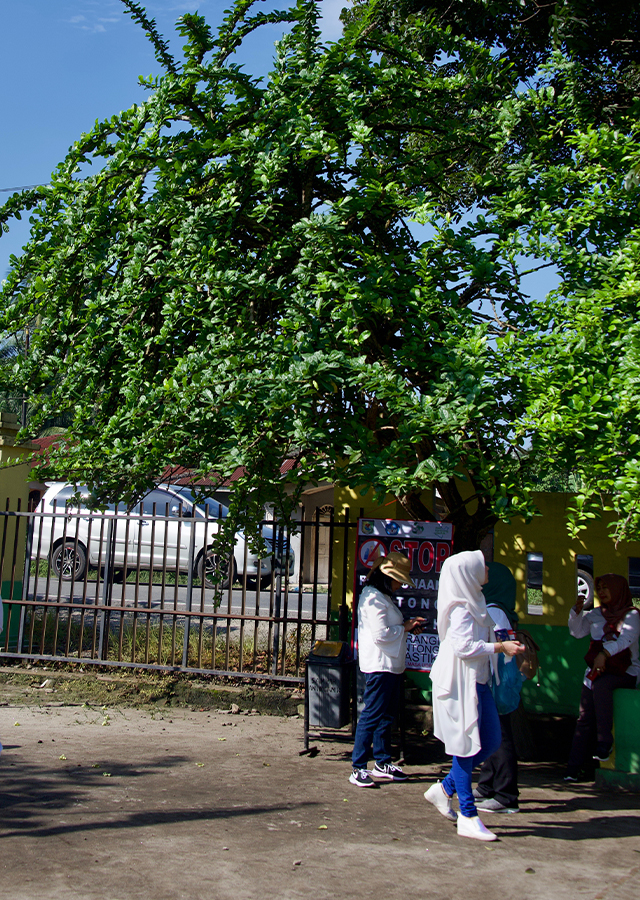Traditional Herbs from Aegle marmelos
asthma
- Take 5 g of dried maja leaves.
- Brew it with a glass of boiling water.
- Let it warm and add 1 teaspoon of honey.
- Drink 2 times a day.
diabetes
- Prepare 100 g of leaves and\u00a0a cup of boiled water.
- Blend the two ingredients until smooth.
- Strain then drink once a day for 3 days in the treatment of diabetes.
What is Aegle marmelos Looks like??



Parts of Aegle marmelos that could be used
- Leaves", "Bark", "Fruit", "Roots", "Twigs
Aegle marmelos Distribution
Kalabasa is widespread in Assam, Bangladesh, India, Nepal, Pakistan, the Western Himalayas. In India, Bangladesh, Pakistan and Sri Lanka, kalabasa fruit is an important wedding device because it is considered to be the incarnation of Hyang Shiva. This plant has also been used by the inhabitants of the Indian subcontinent for more than 5000 years. The leaves, bark, roots, and fruit are widely used in traditional Indian, Ayurvedic, and Siddha medicine. According to various studies, kalabasa has antimicrobial, hypoglycemic, astringent, antidiarrheal, antidysentery, demulsen, analgesic, anti-inflammatory, antipyretic, wound-healing, insecticidal and gastroprotective properties.Agroecology of Aegle marmelos
This plant is a tree that can grow in tropical and sub-tropical areas, tolerant of harsh conditions, including extreme temperatures. It can grow from sea level to an altitude of 1,200 m above sea level, where the average annual temperature can range from -6 to 48 °C. It does best in fertile, well-drained soil, but can tolerate poor soil and alkaline conditions. Grows well in boggy, alkaline or rocky soils that have a pH range from 5 to 8. The plant is very drought tolerant.
Morphology of Aegle marmelos
- Woody stem (ligosus), branched, round, thorny, and yellowish white.
- Leaves grow alternately, composed of 3, sometimes 5 oval leaves, 4-10 cm long and 2-5 cm wide . The terminal leaves have long petioles.
- The flowers are yellowish white or greenish and have a fragrant aroma.
- The fruit is about 5-20 cm in diameter, ovate or round has fruit skin that turns pale yellow when ripe. The flesh is sweet, thick, aromatic, jelly-like, orange in color.
- There are many seeds, oval and flat.
Cultivation of Aegle marmelos
Maja reproduction is generative (seeds) and vegetative (grafting).
Aegle marmelos, more details :
Chemical Content of Aegle marmelosAlkaloids, cardiac glycosides, terpenoids, saponins, tannins, flavonoids, steroids, essential oils, sitosterol, marmelle oil, pectin, phenol, limonene, (E)-ß-ocimene, germacrene B.
Benefits of Aegle marmelos
Substitute for hair oil, for hypochondriasis, melancholia, to treat heart palpitations, catarrh, asthma, as a laxative, fever reducer, eye lotion, treat diarrhea, dysentery, dyspepsia, prevent and treat hemorrhoids, tuberculosis, gripping pain in the waist , diabetes, nausea medicine.
Simplisia of Aegle marmelos
- Prepare enough fresh kalabasa\/maja leaves then wash them with clean water.
- After they are clean, drain them so that the remaining washing water is wasted.
- Dry them by airing them in a place protected from sunlight.\u00a0", "Store in a clean, airtight container.
Another Facts for Aegle marmelos :
Synonym of Aegle marmelosCrataeva marmelos L., Feronia pellucida Roth, Crateva religiosa Ainslie
Habitus of Aegle marmelos
Bush. Annual shrub or small tree, 10 - 15 m high
Habitat of Aegle marmelos
- Forest
No comments:
Post a Comment